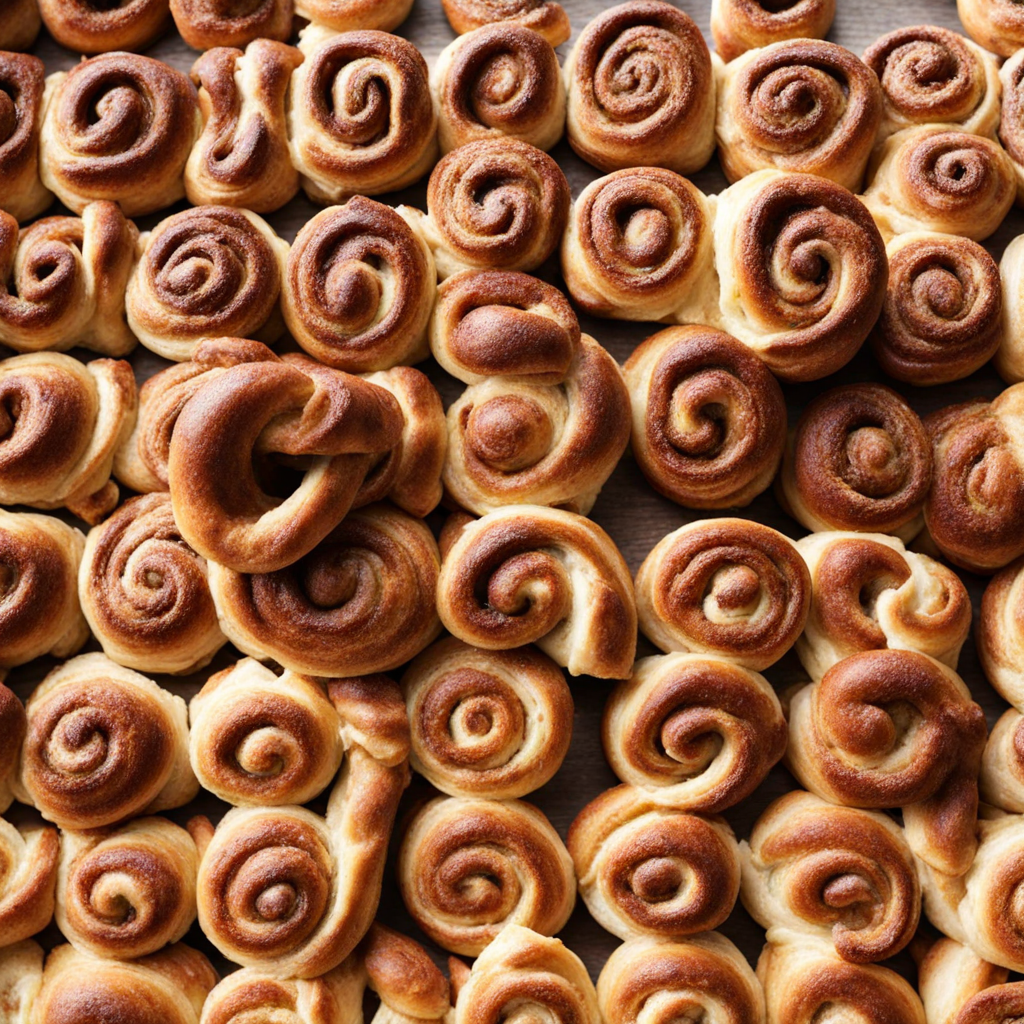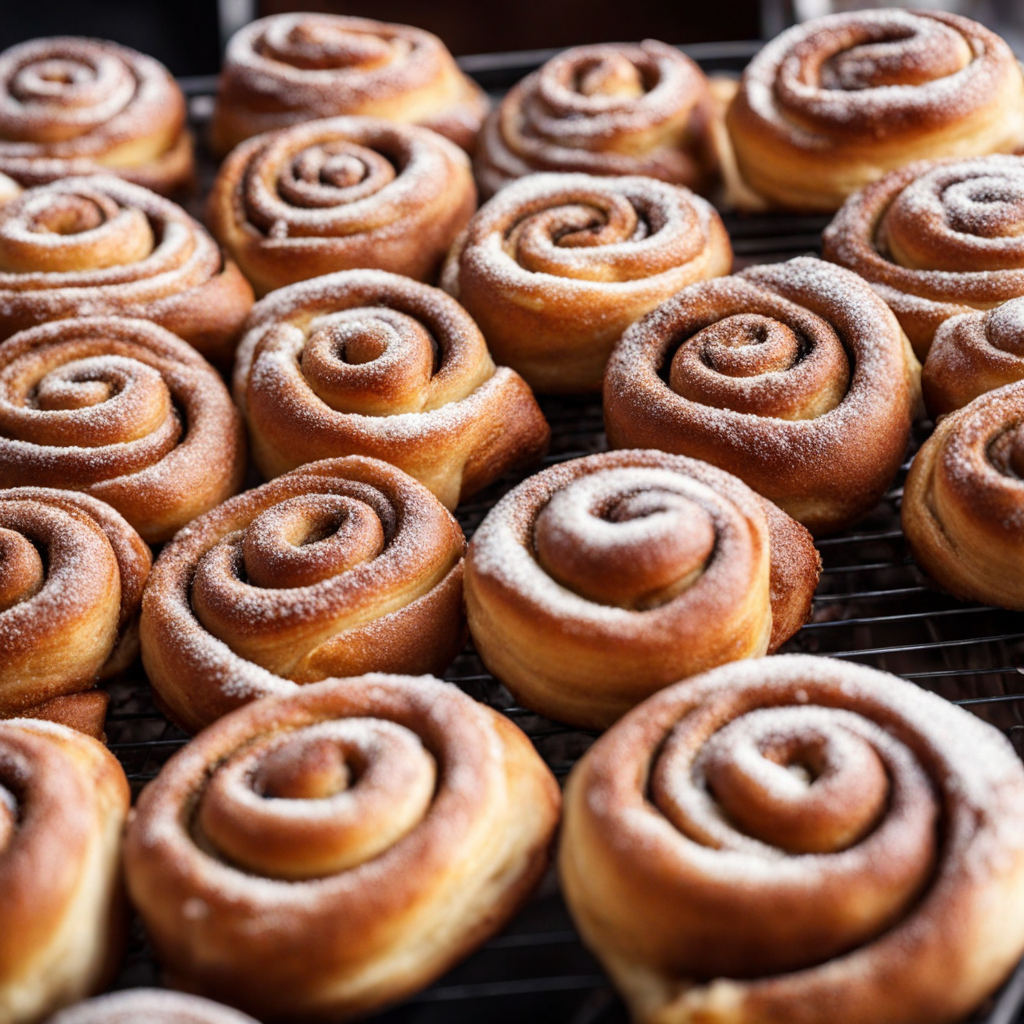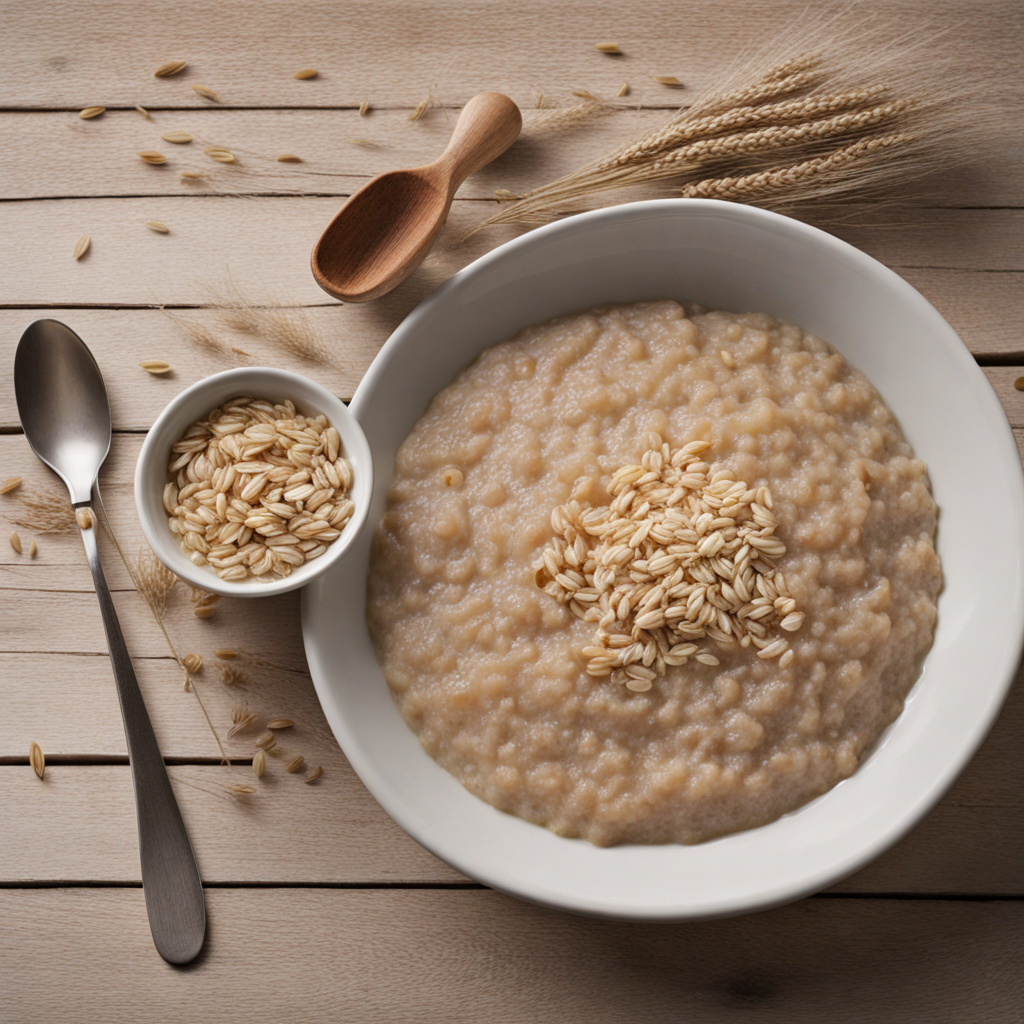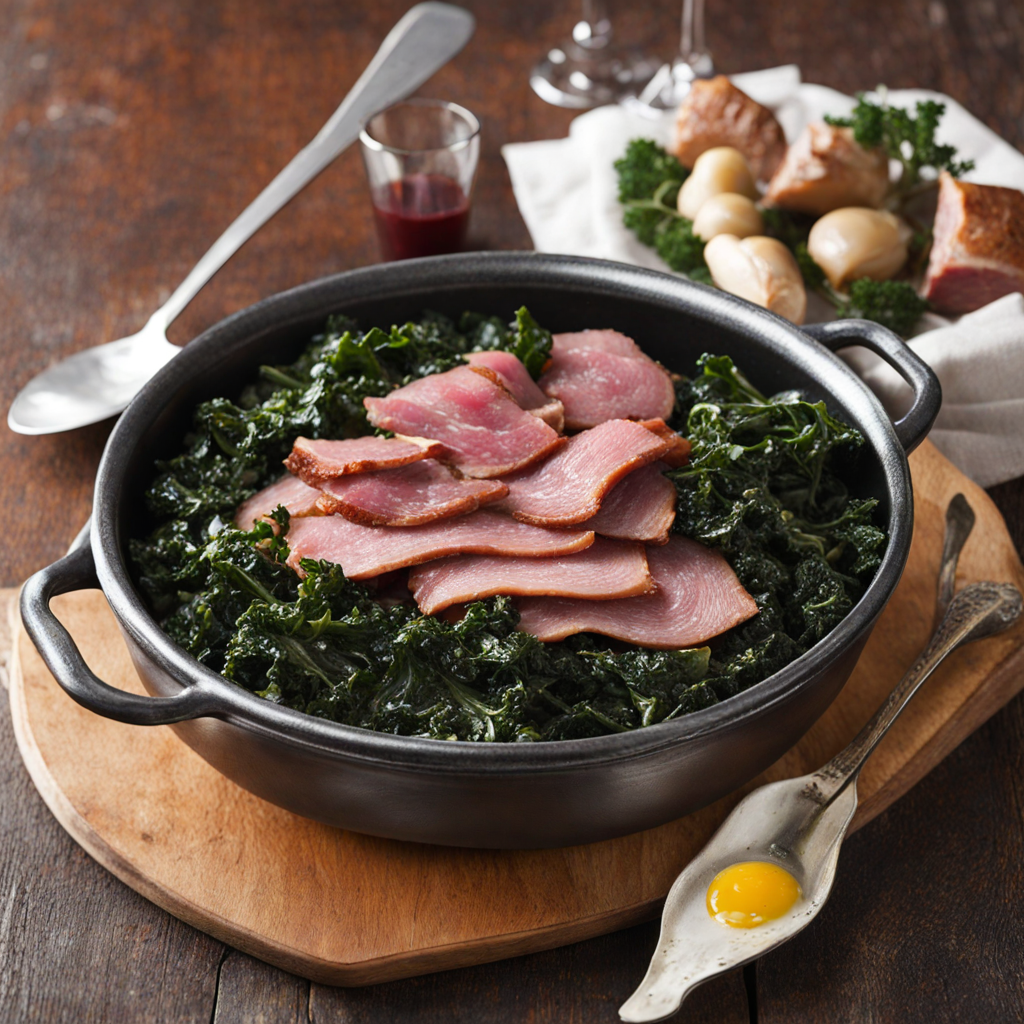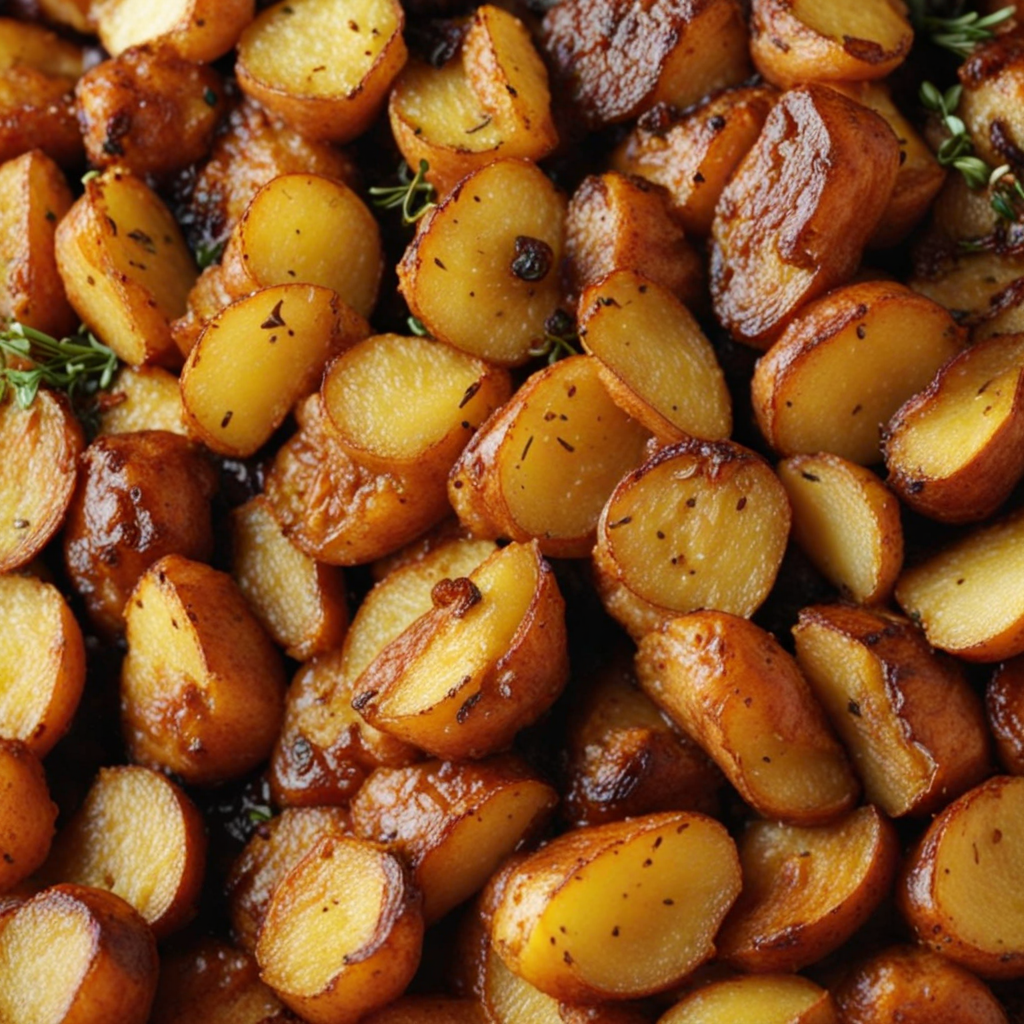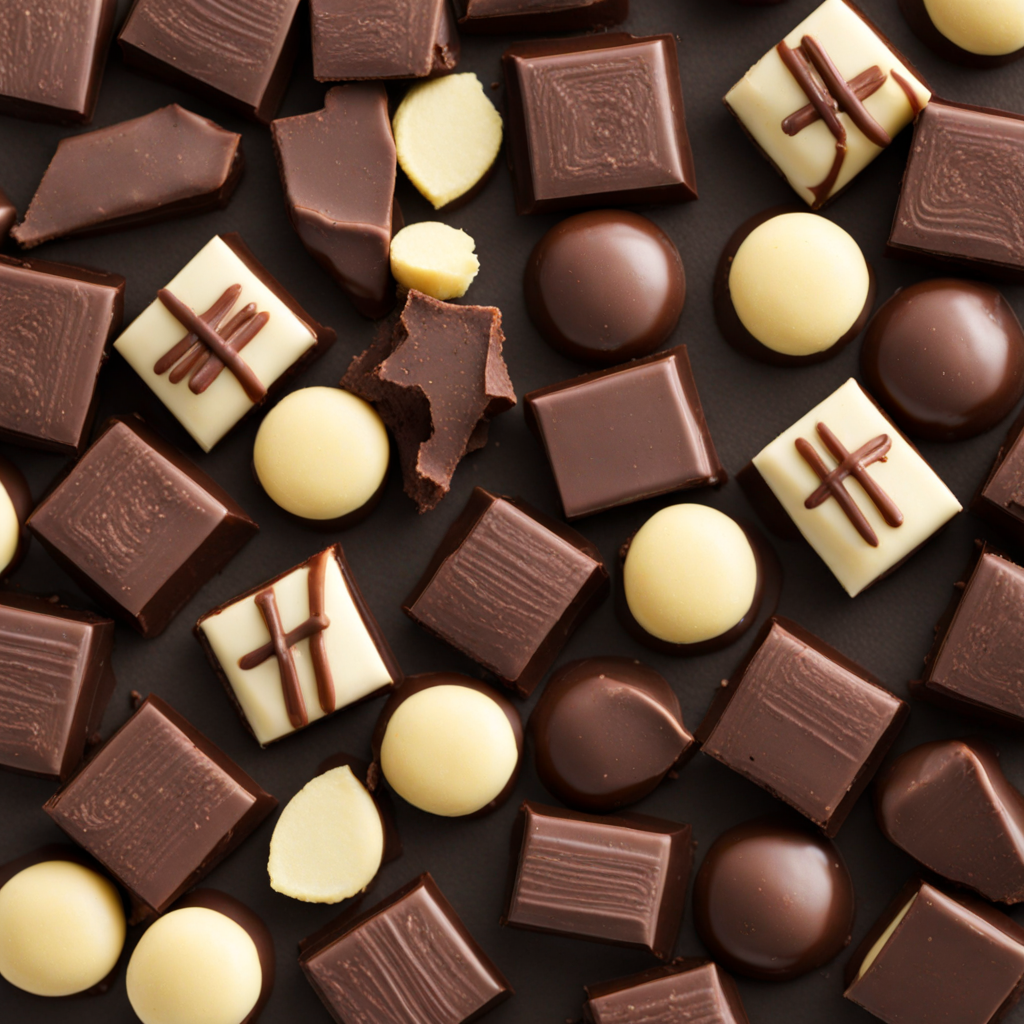Kanelsnegle
Kanelsnegle, often referred to as Danish cinnamon rolls, are a delightful pastry that embodies the perfect blend of sweetness, warmth, and comforting spices. These spiral-shaped treats are made from a rich, buttery dough that is soft and pillowy. The dough is rolled out and generously spread with a mixture of cinnamon, sugar, and sometimes a hint of cardamom, which adds a unique depth of flavor. Once rolled up, the dough is sliced into swirls and baked until golden brown, filling the air with a fragrant aroma that is simply irresistible. The texture of Kanelsnegle is a harmonious contrast between the soft, fluffy interior and the slightly crisp exterior. Each bite reveals a luscious swirl of cinnamon filling, offering a delightful sweetness that is perfectly balanced with the warmth of the spices. Often, they are finished off with a simple glaze made from powdered sugar and milk or a dusting of icing sugar, adding an extra touch of sweetness that enhances the overall experience. The combination of flavors and textures makes Kanelsnegle a beloved treat, perfect for breakfast, brunch, or as an afternoon snack. In Denmark, enjoying Kanelsnegle is not just about the taste; it's also about the experience of savoring something homemade and comforting. They are often enjoyed with a cup of coffee or tea, making for a delightful pairing that elevates the simple pleasure of eating. Whether shared with friends or savored alone, Kanelsnegle invites you to indulge in a taste of Danish culture and culinary tradition, transporting you to the cozy cafes of Copenhagen with every bite.
How It Became This Dish
Kanelsnegle: A Sweet Journey Through Danish Culinary History In the realm of pastries, few delights capture the heart and palate quite like the beloved Kanelsnegle of Denmark. These cinnamon rolls, characterized by their soft, spiral form and rich, sweet filling, are not just a treat for the taste buds; they embody the cultural history and culinary evolution of Denmark itself. To truly appreciate Kanelsnegle, one must delve into its origins, significance in Danish culture, and the developments that have shaped it over time. Origins: A Sweet Beginning The precise origins of Kanelsnegle can be traced back to the 19th century, a time when Denmark was undergoing significant changes in its culinary landscape. The introduction of new ingredients, particularly sugar, flour, and spices, was largely influenced by trade and the growing economy of the time. The spice trade, thriving due to colonial pursuits, made cinnamon—a key ingredient in Kanelsnegle—widely accessible. However, the roots of this pastry can also be linked to broader European influences. The Danish love for baked goods, particularly yeasted breads and pastries, was inspired by neighboring countries like Germany and Sweden. The term "snegle," which means "snail" in Danish, aptly describes the spiral shape that characterizes these cinnamon rolls, evoking an image of a snail’s shell. The combination of a rich dough, sweet filling, and the distinctive spiral shape likely evolved from traditional German cinnamon rolls known as "Zimtschnecken." Cultural Significance: More Than Just a Pastry In Denmark, Kanelsnegle is more than a mere confection; it holds a significant place in the fabric of Danish life. Commonly enjoyed as a breakfast item or an afternoon snack, it is often accompanied by a steaming cup of coffee, reflecting the Danish concept of "hygge"—a cultural ethos centered around comfort, coziness, and togetherness. The ritual of enjoying Kanelsnegle is deeply embedded in social gatherings and familial traditions. It is not uncommon for Danish families to prepare these rolls together, especially during weekends or special occasions. The act of baking becomes a communal activity, fostering connections and creating cherished memories. Moreover, Kanelsnegle has also made its way into the modern café culture that has flourished in Denmark, particularly in Copenhagen. Here, artisanal bakeries and coffee shops have embraced and reinvented the classic recipe, introducing variations that include diverse fillings like cardamom, chocolate, or even cream cheese. This evolution reflects the adaptability of Danish cuisine and the ongoing dialogue between tradition and innovation. Development Over Time: A Culinary Evolution The journey of Kanelsnegle through the decades is a testament to the adaptability of Danish culinary practices. In the early 20th century, with the rise of industrialization, baking became more accessible to the masses. The introduction of factory-produced yeast and pre-packaged ingredients made it easier for home bakers to create these delightful pastries. Consequently, Kanelsnegle became a staple in Danish households, often featured in local bakeries and markets. Post-World War II Denmark saw an increase in the popularity of coffee culture, further cementing the place of Kanelsnegle in daily life. The pastry became synonymous with coffee breaks at work and social gatherings, much like its role in contemporary society. As Denmark entered the late 20th and early 21st centuries, the globalization of food culture and the rise of the internet allowed for greater exchange of culinary ideas. Danish bakers began exploring and experimenting with traditional recipes, leading to a renaissance of artisanal baking. One notable trend has been the incorporation of health-conscious ingredients into the Kanelsnegle recipe. With the rise of dietary awareness, some bakers have sought to create versions that substitute traditional ingredients with healthier alternatives, such as whole grain flours, organic sugars, and even plant-based butters. These adaptations have opened the door for a new generation of pastry lovers who seek to enjoy sweet indulgences while adhering to a healthier lifestyle. Kanelsnegle in the Modern Era: A Global Phenomenon Today, Kanelsnegle can be found both in Denmark and around the world, reflecting the global appetite for authentic, artisanal baked goods. In Denmark, it remains a cherished symbol of national identity, appearing in bakeries nationwide, from quaint village shops to bustling city cafes. The pastry has also made its way into the hearts of food enthusiasts globally, often featured in international bakeries and online recipes. The Danish culture of "fika," or coffee breaks, has further propelled Kanelsnegle into the spotlight, as people seek out delicious treats to accompany their coffee moments. The pastry’s universal appeal lies in its comforting flavors and inviting aroma, making it a favorite not just in Denmark but in kitchens worldwide. Conclusion: A Living Tradition Kanelsnegle is more than just a cinnamon roll; it is a living tradition that reflects the history and evolution of Danish cuisine. From its humble beginnings influenced by trade and neighboring cultures to its place in contemporary society, this pastry has woven itself into the very fabric of Danish life. As we savor a bite of Kanelsnegle, we partake in a rich narrative that brings together family, community, and the timeless joy of baking. Whether enjoyed in a cozy café in Copenhagen or shared among friends at a home gathering, Kanelsnegle remains a delectable testament to the enduring power of culinary heritage and the sweet connections it fosters. So, the next time you indulge in this spiral delight, remember that you are not merely savoring a pastry; you are partaking in a delicious story that transcends time and borders.
You may like
Discover local flavors from Denmark


